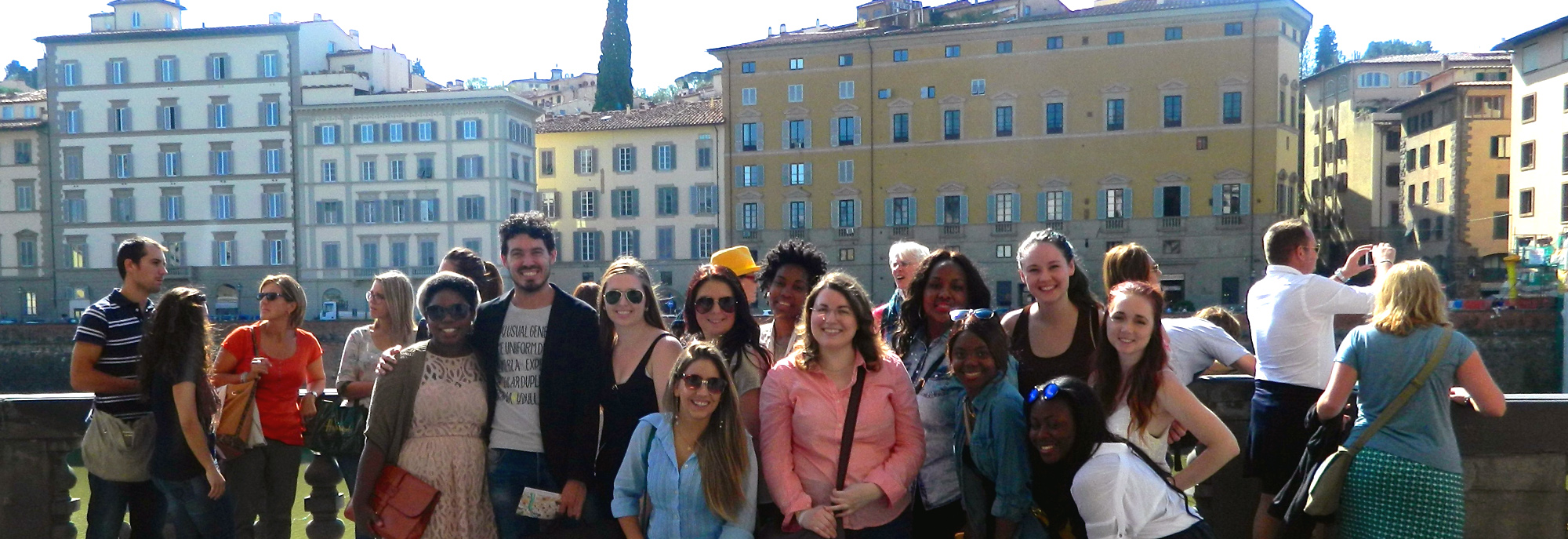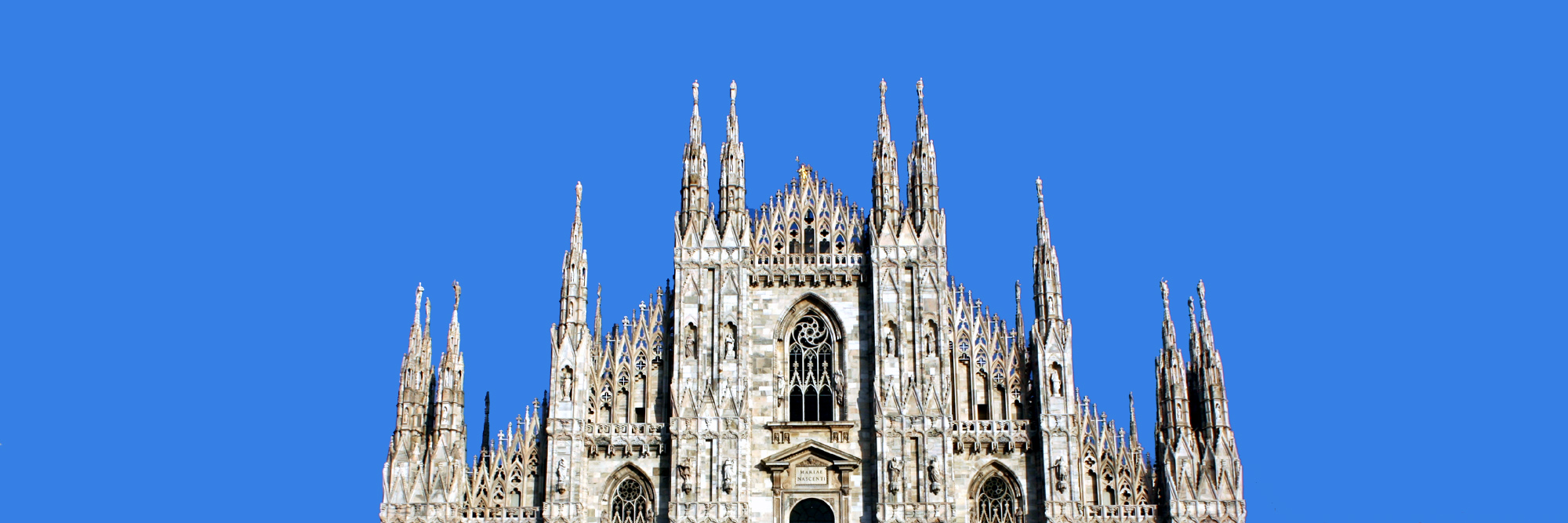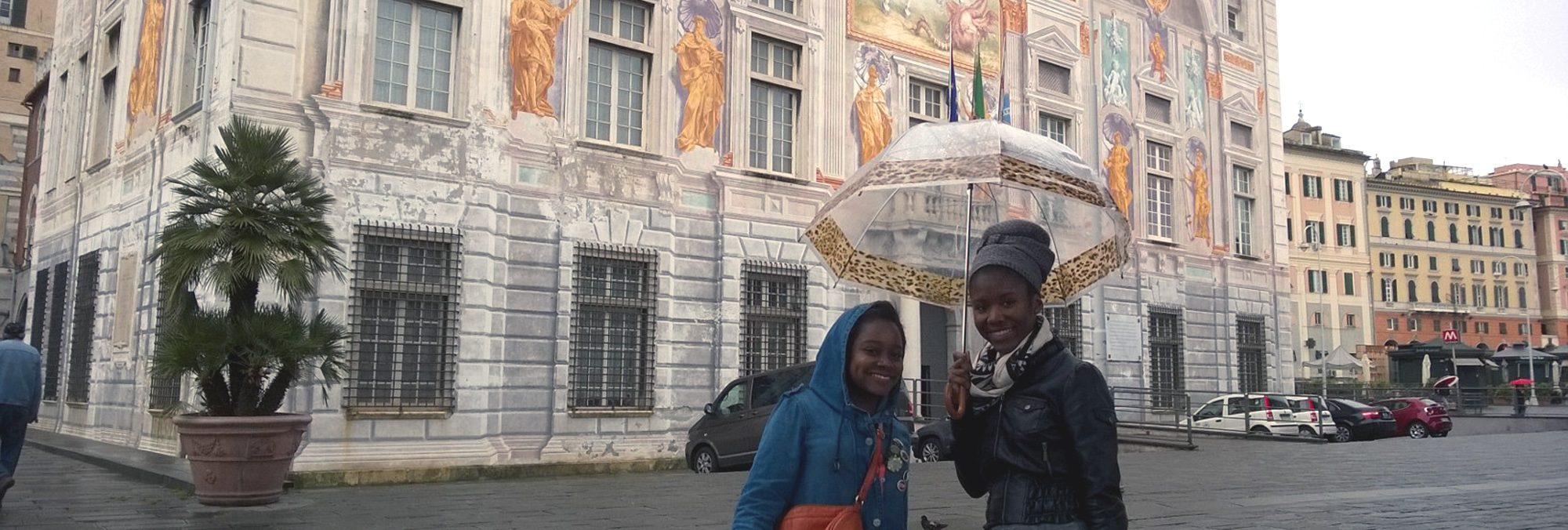ITALY ACADEMICS
The semester and academic year curriculum offer courses, apprenticeships, and internships. Courses are taught at Accademia Italiana. Apprenticeships are organized by Schola Academy Firenze in cooperation with major brands and workshops in Florence. Internships are with Zerolab, a company that focuses on sustainability in the fashion industry.
KEI offers two academic tracks. The Academic Track allows students to enroll in up to 5 courses (15 credits) per semester. The Experiential Track consists of an apprenticeship (6 credits) combined with up to 3 courses (9 credits), or an internship (3 credits) combined with up to 4 courses (12 credits).
COURSES
Download and use the Course Offerings file to view and select courses offered during the Fall and Spring semesters. After selecting your courses, review course descriptions under each department (below). Click on course titles to download syllabi. If a title is not hyperlinked, email KEI to request syllabi for the course(s).
Fashion & Textile Design
![]() ACCF TDTP 290 Serigraphy – Textile Printing
ACCF TDTP 290 Serigraphy – Textile Printing
![]() ACCF FDWD 190 Window Displays Design
ACCF FDWD 190 Window Displays Design
![]() ACCF FDTT 390 Tailoring Techniques (FALL)
ACCF FDTT 390 Tailoring Techniques (FALL)
![]() ACCF FDTT 390 Tailoring Techniques (SPRING)
ACCF FDTT 390 Tailoring Techniques (SPRING)
![]() ACCF FDCS 390 Clothing Samples
ACCF FDCS 390 Clothing Samples
![]() ACCF FDCT 301 Fashion Illustration 3 – Color Techniques
ACCF FDCT 301 Fashion Illustration 3 – Color Techniques
![]() ACCF FDCT 390 Collection 3
ACCF FDCT 390 Collection 3
![]() ACCF FDCT 490 Collection 4 – spring semester
ACCF FDCT 490 Collection 4 – spring semester
![]() ACCF FDFP 490 Fashion Photography
ACCF FDFP 490 Fashion Photography
![]() ACCF FDTC 390 History of 20th Century Fashion
ACCF FDTC 390 History of 20th Century Fashion
![]() ACCF FDCT 490 Collection 4 – spring semester
ACCF FDCT 490 Collection 4 – spring semester
![]() ACCF FDFL 590 Final Projects Sewing Laboratory
ACCF FDFL 590 Final Projects Sewing Laboratory
![]() ACCF FDMK 490 Marketing and Trends
ACCF FDMK 490 Marketing and Trends
![]() ACCF FDAD 490 Accessories Design
ACCF FDAD 490 Accessories Design
![]() ACCF FDTD 490 Textile Design
ACCF FDTD 490 Textile Design
Interior & Product Design
![]() ACCF IDIP 390 Interior Planning 2 – Commercial Spaces
ACCF IDIP 390 Interior Planning 2 – Commercial Spaces
![]() ACCF IDBM 390 Technology of Building Materials 1
ACCF IDBM 390 Technology of Building Materials 1
![]() ACCF IDPD 390 Industrial Design
ACCF IDPD 390 Industrial Design
![]() ACCF IDCD 390 Computer Aided Design – Rhino
ACCF IDCD 390 Computer Aided Design – Rhino
![]() ACCF IDCD 391 Computer Aided Design – Cinema 4D
ACCF IDCD 391 Computer Aided Design – Cinema 4D
![]() ACCF IDMK 490 Elements of Marketing
ACCF IDMK 490 Elements of Marketing
![]() ACCF IDMP 490 Industrial Materials and Processes
ACCF IDMP 490 Industrial Materials and Processes
ACCF IDIP 490 Advanced Interior Planning
![]() ACCF IDPD 490 Advanced Industrial Design
ACCF IDPD 490 Advanced Industrial Design
![]() ACCF IDCD 490 History of Contemporary Design
ACCF IDCD 490 History of Contemporary Design
![]() ACCF IDBM 490 Technology of Building Materials 2
ACCF IDBM 490 Technology of Building Materials 2
![]() ACCF IDWD 290 Design of Window Displays
ACCF IDWD 290 Design of Window Displays
![]() ACCF IDTP 490 Theory of Perception and Psychology of Form
ACCF IDTP 490 Theory of Perception and Psychology of Form
Photography & New Media
![]() ACCF PTDI 290 Digital Image Elaboration
ACCF PTDI 290 Digital Image Elaboration
![]() ACCF PTVD 390 Video Design
ACCF PTVD 390 Video Design
![]() ACCF PTIL 390 Photographic Lighting Techniques
ACCF PTIL 390 Photographic Lighting Techniques
![]() ACCF PTPJ 390 Photojournalism
ACCF PTPJ 390 Photojournalism
ACCF PTTP 390 Travel Photography
ACCF PTP 390 Web Design
ACCF PTSL 490 Still-life Photography
ACCF PTPP 490 Portrait Photography
![]() ACCF PTCG 490 Computer Graphic
ACCF PTCG 490 Computer Graphic
![]() ACCF PTCP 490 Photographic Culture
ACCF PTCP 490 Photographic Culture
![]() ACCF PTHM 490 History of Mass Media
ACCF PTHM 490 History of Mass Media
![]() ACCF PTVD 590 Video Design 2
ACCF PTVD 590 Video Design 2
![]() ACCF PTWD 590 Web Design 2
ACCF PTWD 590 Web Design 2
![]() ACCF PTFP 590 Fashion Photography
ACCF PTFP 590 Fashion Photography
![]() ACCF PTPP 590 Advanced Photography – Final Portfolio
ACCF PTPP 590 Advanced Photography – Final Portfolio
![]() ACCF PTDP 590 Photographic Direction
ACCF PTDP 590 Photographic Direction
Liberal & Studio Arts
![]() ACCF ITLN 101 Elementary Italian
ACCF ITLN 101 Elementary Italian
![]() ACCF ITLN 102 Elementary Italian II
ACCF ITLN 102 Elementary Italian II
![]() ACCF ITLN 201 Intermediate Italian
ACCF ITLN 201 Intermediate Italian
![]() ACCF ITLN 202 Intermediate Italian II
ACCF ITLN 202 Intermediate Italian II
![]() ACCF ITLN 301 Advanced Italian
ACCF ITLN 301 Advanced Italian
![]() ACCF SOIT 360 Italian Style and Culture
ACCF SOIT 360 Italian Style and Culture
![]() ACCF AHRA 310 History of Italian Renaissance Art
ACCF AHRA 310 History of Italian Renaissance Art
![]() ACCF AHMI 310 The Life and Works of Michelangelo
ACCF AHMI 310 The Life and Works of Michelangelo
![]() ACCF FDTC 390 History of 20th Century Fashion
ACCF FDTC 390 History of 20th Century Fashion
![]() ACCF LIIT 321 Medieval and Renaissance Literature
ACCF LIIT 321 Medieval and Renaissance Literature
![]() ACCF LIIT 320 Contemporary Italian Literature
ACCF LIIT 320 Contemporary Italian Literature
![]() ACCF MSIC 310 Italian Cinema
ACCF MSIC 310 Italian Cinema
![]() ACCF POIT 350 Italy in the European Union
ACCF POIT 350 Italy in the European Union
![]() ACCF SASF 110 Sketching Florence
ACCF SASF 110 Sketching Florence
![]() ACCF SAPT 110 Painting Techniques
ACCF SAPT 110 Painting Techniques
![]() ACCF SAPF 310 Photographing Florence
ACCF SAPF 310 Photographing Florence
![]() ACCF TDTP 190 Printing on Textiles
ACCF TDTP 190 Printing on Textiles
![]() ACCF SAMM 310 Mixed Media
ACCF SAMM 310 Mixed Media
![]() ACCF LACA 390 History of Contemporary Art 1
ACCF LACA 390 History of Contemporary Art 1
![]() ACF LACA 490 History of Contemporary Art 2
ACF LACA 490 History of Contemporary Art 2
![]() ACCF LAVA 490 Latest Trends in Visual Arts
ACCF LAVA 490 Latest Trends in Visual Arts
![]() ACCF LAAA 490 Aesthetics
ACCF LAAA 490 Aesthetics
![]() ACCF LATP 490 Theory of Perception and Psychology of Form
ACCF LATP 490 Theory of Perception and Psychology of Form
APPRENTICESHIP
Apprenticeships are organized by Schola Academy Firenze in collaboration with exclusive brands such as Stefano Bemer, Scuola del Cuoio, Superduper, and Cibrèo. Apprenticeships are hands-on experiences that are supervised by Master Artisans from the partner brands. Fashion apprenticeships integrate design, technical skills (pattern-making, construction, etc.), branding, and marketing. Culinary apprenticeships integrate the knowledge of ingredients, cooking skills, and restaurant management. The aim is to provide students with the knowledge and skills to realize their ideas and creativity into an actual finalized product.
Students enroll in one apprenticeship (3-6 credits) plus up to 4 courses (12 credits). Note that apprenticeships require a minimum enrolment of 6 students to run. An additional fee of $1500 will be added to the program fee. Click on the title to download the syllabus.
Leather Experience in Bagmaking
This apprenticeship carries on the great tradition and incomparable, unrivaled knowledge of Scuola del Cuoio, merging tradition and contemporaneity. Students will learn all the major leather bag-making techniques, alongside design, branding, and management elements that are crucial to developing a personal path in the fashion industry.
The apprenticeship features professional training in pattern making and prototyping of basic constructions, such as:
- Clutch bags
- Bucket bags
- Classic bags with compartments
- Saddle Bags
The final project of each student is the common thread of the apprenticeship, leading students to acquire the skills and the knowledge to put their ideas into practice. Students will be encouraged to think and develop the essential elements of their own design identity. Students will conceive, design, and create their own capsule collection, starting to define their personal aesthetic vision while thinking about brand-building strategies.
The skills and vision acquired during the apprenticeship give students the opportunity to start or enrich a professional career as:
- Pattern Makers
- Prototypers
- Product Developers
- Accessory Designers
- Fashion Entrepreneurs
The Scuola del Cuoio was founded in 1949 through the collaborative efforts of the Franciscan Friars of the Monastery of Santa Croce and the Gori and Casini families, Florentine leather artisans since the 1930s. Scuola del Cuoio is the leading workshop in Italy for bag making and leather working.
Bespoke Shoemaking (Stefano Bremer)
Students will learn skills of luxury shoemaking, design their own collection and obtain a professional skill level. The final project of each student will be the common thread of the course and will lead the students to acquire the skills and the knowledge to put their ideas into practice. Students will be encouraged to think and develop the essential elements of their own design identity. Students will conceive, design, and create their own capsule collection, starting to define their personal aesthetic vision while commencing to think about possible brand-building strategies.
The skills and vision acquired during the apprenticeship give students the opportunity to start or enrich a professional career as:
- Bespoke Shoemakers
- Shoe Designers
- Shoe Prototypers
- Technical Consultants
- Fashion Entrepreneurs
Stefano Bemer committed his career to master his unique blend of shoemaking techniques to become the perfect Italian men’s shoe. This quest to develop his own idea of perfection has led to accomplishments that have been recognized and acclaimed by connoisseurs all around the world. This would have been enough for most people. However, great people in history understand that it is not just about themselves, in the here and now, but also about their legacy and the impact they have on others. With this in mind, Stefano Bemer is committed to training artisans and transmitting its own legacy of quality and style.
Womens Shoemaking (Stefano Bemer)
This apprenticeship focuses on designing and prototyping women’s shoes by blending the traditional with the contemporary. Students will learn classic artisanal manufacturing techniques, design, and branding strategies, to become a modern craftsperson able to join the fashion industry or develop a personal business.
The final project of each student will be the common thread of the course and will lead students to acquire the skills and the knowledge to put their ideas into practice. Students will be encouraged to think and develop the essential elements of their own design identity. Students will conceive, design, and create their own capsule collection, starting to define their personal aesthetic vision while commencing to think about possible brand-building strategies.
The skills and vision acquired during the course give students the opportunity to start or enrich a professional career in the fields of women’s footwear as:
- Pattern Makers
- Prototypers
- Product Developers
- Technical Consultants
- Master Cobblers
- Fashion Entrepreneurs
Stefano Bemer committed his career to master his unique blend of shoemaking techniques to become the perfect Italian men’s shoe. This quest to develop his own idea of perfection has led to accomplishments that have been recognized and acclaimed by connoisseurs all around the world. This would have been enough for most people. However, great people in history understand that it is not just about themselves, in the here and now, but also about their legacy and the impact they have on others. With this in mind, Stefano Bemer is committed to training artisans and transmitting its own legacy of quality and style.
Handmade Hats (Superduper)
This apprenticeship will take students into the world of fashion ateliers. Students will acquire master craft skills while learning how to launch their own brand through on-field lectures about branding and design. The apprenticeship consists of two modules. The first features an intensive introduction to Hat Making, with notions on design and branding too. In the second module, students decide their favorite path to attend, choosing between Design, Branding, and Making. Each path has its own artisan from SUPERDUPER, in order to provide the best training and learning method.
The apprenticeship delivers the widest and deepest training in Hat making and Design, featuring:
- Blocked Hats: Making and Design
- Blocking Hats by hands and machine
- Hand stitching and use of a plain sewing machine
- Use of: Hand and Machine brim cutter, Arm sewing machine, Chain sewing machine
- Design and Branding labs
- Final Project
The final project will be the common thread of the course and will lead students to acquire the skills and the knowledge to put ideas into practice. Students will be encouraged to think and develop the essential elements of their design identity. Students will conceive, design, and create their own capsule collection, starting to define their personal aesthetic vision while commencing to think about possible brand-building strategies.
The skills and vision acquired during the apprenticeship give students the opportunity to start or enrich a professional career as:
- Hatmakers
- Product Developers
- Accessory Designers
- Technical Consultants
- Fashion Entrepreneurs
Superduper, founded in Florence in 2011, grew out of a period of creative experimentation and a strong desire to make. This opened us up to a new territory waiting to be rediscovered – the world of hats. Within two years, the company was gaining industry recognition for its fresh take on an artisanal heritage. In 2013, the brand won the Who is on Next? Award in the Men’s category, with a special mention in the Women’s category. Today, Superduper has matured into a global brand that can be found around the world.
From their creative studio and workshop at Manifattura Tabacchi, Superduper challenges the standard operating model of fashion e-commerce. The signature method allows them to make all online purchases to order, reducing waste and excess inventory while maintaining the highest quality. Internal production means that they can make a hat in 72 hours, transforming the finest raw materials into the hands of a team of young artisans.
Food Artisan
Students will train at one or more Cibreo venues, considered one of the most renowned culinary businesses in Florence and Italy, allowing students to learn the entire process of a professional kitchen by working in direct contact with its staff. Students will have a 360° technical, practical, and theoretical approach to everything that concerns food production, preparation, consumption, and business.
The apprenticeship is designed with a focus on the knowledge of local, seasonal, and artisanal ingredients, cooking skills, and restaurant management. Students will learn how to develop a new concept for culinary projects and artisan food businesses and fundamental cooking techniques and how to source and select the best quality ingredients. The apprenticeship features professional training on:
- Homemade Pasta, gnocchi, Italian classics
- Fish and seafood
- Baking: bread, pizza
- Introduction to pastry
Students will be required to complete and present their Final Project – including a business plan, logo, and a defined brand strategy. The final project will be an original concept for a new format in the culinary business, anywhere in the world.
Cibrèo was founded on September 8th, 1979 following an intuition by Fabio Picchi, who chose this name in full harmony with its family tradition and with a real passion for the alchemy of Florentine cuisine. In a constant shift between past and present, the city, the neighborhood, and the whole world, Cibrèo has become the ideal setting for cultural discussion and social promotion. Cibrèo is not only a restaurant it is also an eatery – Cibrèo Trattoria (the so-called Cibrèino), a coffee shop – Caffè Cibrèo, a cultural association – Teatro del Sale, a Tuscan Oriental restaurant – Ciblèo and a grocery store, C.Bio.
Ceremic Crafts (Niccolo Poggi Firenze)
This apprenticeship blends classic elements of pottery with digital design. Students will learn the skills of ceramic making, including fundamental pottery and glazing techniques combined with 3D Design (Rhinoceros suite). Specifically, students will gain knowledge and skills in:
- Basic 3D Design shapes
- Wheel-thrown, hand-built pottery
- Glazing, embossing, decoration
- Basic firing notions
The final project of each student will be the common thread of the course and will lead the students to acquire the skills and the knowledge to put their ideas into practice. Students will be encouraged to think and develop the essential elements of their own design identity. Students will conceive, design, and create their own capsule collection, starting to define their personal aesthetic vision while commencing to think about possible brand-building strategies.
The skills and vision acquired during the apprenticeship give students the opportunity to start or enrich a professional career in the fields of Ceramic Crafts and Design as:
- Product Designers
- Visual Artists
- Entrepreneurs and contemporary Artisans
Niccolo’ Poggi is the grandson of Ugo Poggi, who founded the company Ugo Poggi in Florence in 1900 as a furniture factory. In 1922, Ugo Poggi opened a shop on Florence’s premier shopping street, Via Strozzi, producing and selling pottery, silverware, china, Murano glass, crystal, and furnishings. Niccolo’ Poggi is now an award-winning designer based in Florence. After graduating with a degree in architecture from The University of Florence, Niccolò started work as an architect and interior designer. While working as an architect, Niccolò was commissioned to design products for international brands, which inspired him to create and produce his own designs.
INTERNSHIP @ ZEROLAB
The fashion sector represents the backbone of the Tuscan and Italian industry, counting almost 22,000 companies that employ over 120,000 employees and impacting over 28% of total exports. A fundamental part of the fashion sector is leather goods, where the high quality of products makes it possible to achieve an international reputation for the most important luxury brands. The economic scope of the sector has an equally strong impact on the environment and on the disposal chain: the leather goods sector creates an enormous quantity of waste, the main part of which are scraps of leather.
Zerolab’s mission is to reduce waste by exploiting artisan skills to transform waste into new products. Zerolab created the first hub for the creative recovery of leather scraps and serves as an incubator and training center for emerging designers, artisans, and craftspeople. The waste represents an opportunity to give new life not only to materials but to new ideas and projects.
Internships at Zerolab focus on one or multiple aspects of the company’s operation, including but not limited to:
- Develop promotional plans for circulating leather, both digitally and physically.
- Create social media campaigns to capture Zerolab’s mission, track engagement, and evaluate the effectiveness of marketing ideas in real time across social channels.
- Research and develop partnerships and promotional opportunities across digital channels to raise awareness of Zerolab’s mission.
- Research, outreach, and follow-up for the international press, collaborators, and business opportunities.
- Preparing rescued leather inventory for reuse and resale, learning Amazon and other online channels for reselling leather excess.
- Working within a team to get leather inventory online, and represented in a way that can drive interest.
Students must commit to a minimum of 120 hours, maintain a daily journal of activities and learning outcomes, and submit a term paper. Students will earn 3 credits for INT 499 Professional Internship.
Internship spaces are limited and will be filled on a rolling basis. KEi encourages students to complete their KEI enrollment process early. There is no additional fee for an internship.
DOWNLOAD FILES
CREDIT & TRANSCRIPTS
Credit and transcripts for courses and apprenticeships are awarded by Accademia Italiana (accredited in Italy) and Lincoln University (accredited in USA). Credit and transcripts for internships are awarded by Lincoln University.
HOST UNIVERSITY
Accademia Italiana, founded in 1984, is one of the top design schools in Italy. The Florence campus is located in the heart of the historic district and has state-of-the-art facilities. Academia’s faculty consists of prominent designers, artists, and scholars who are working professionals in their chosen fields. Accademia is accredited by Italy’s Ministry of Education.







